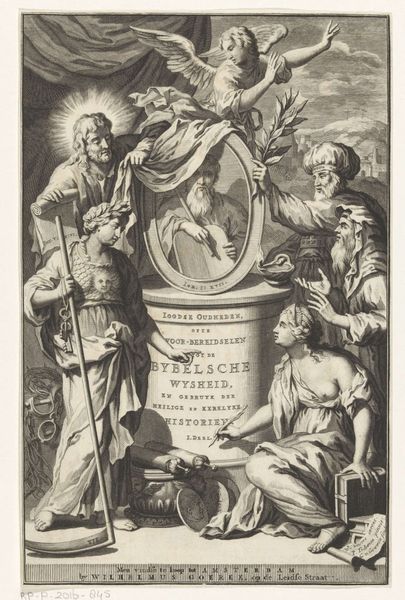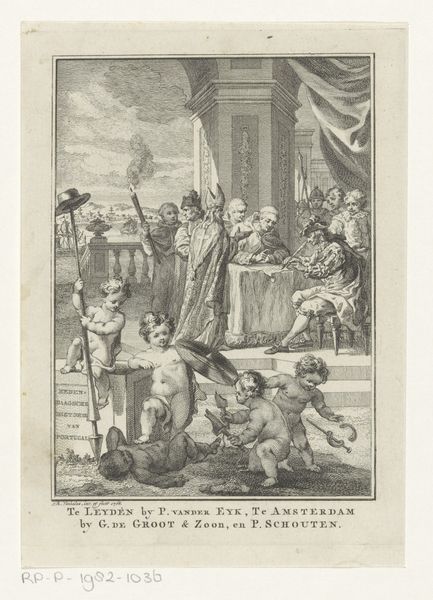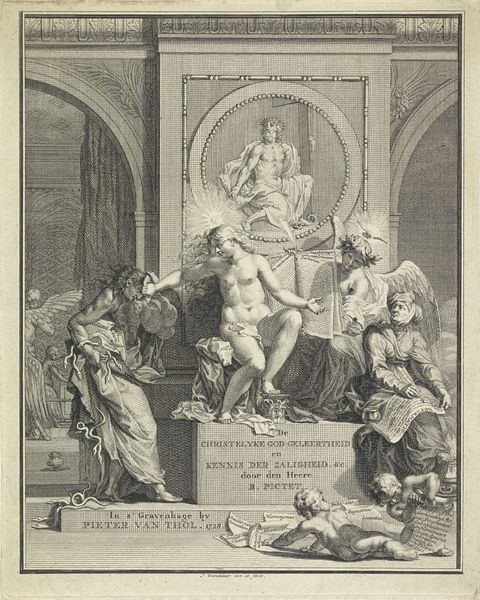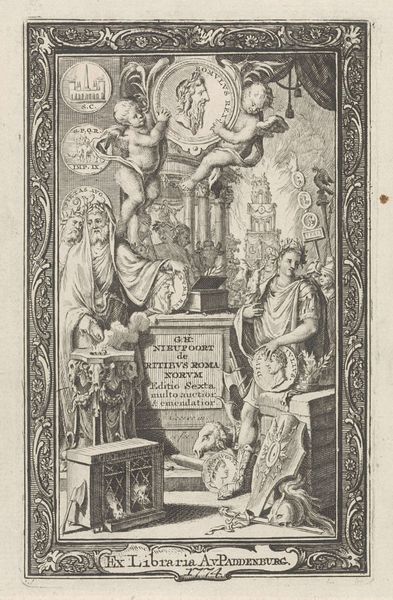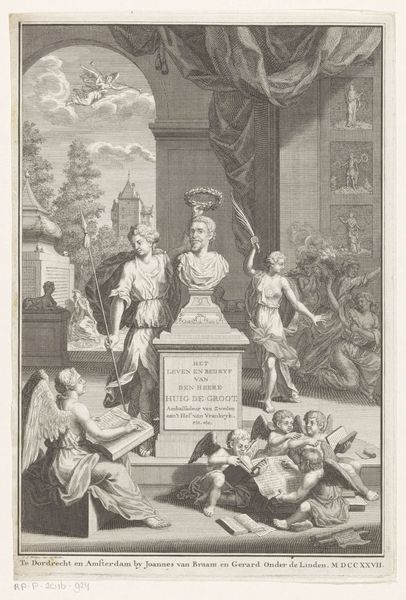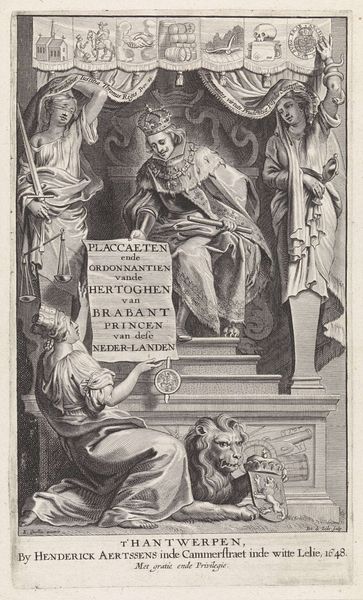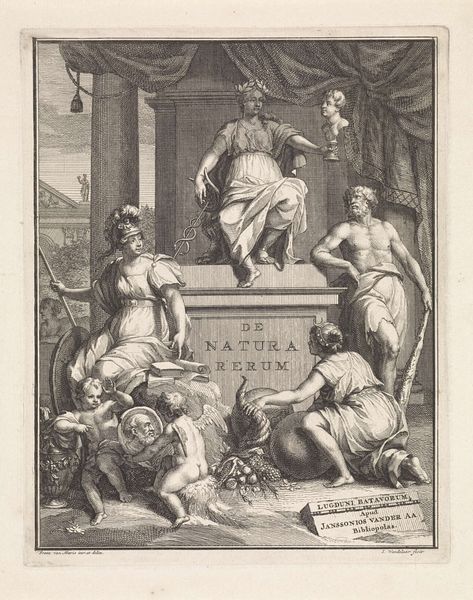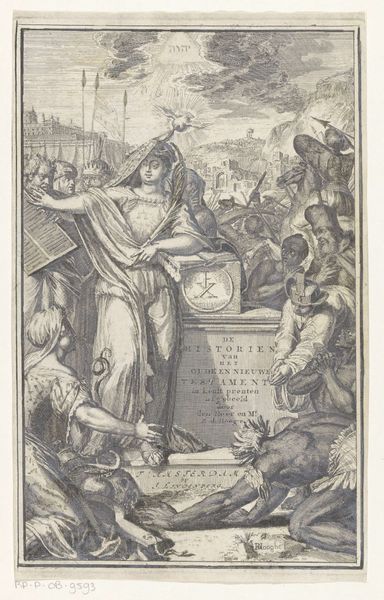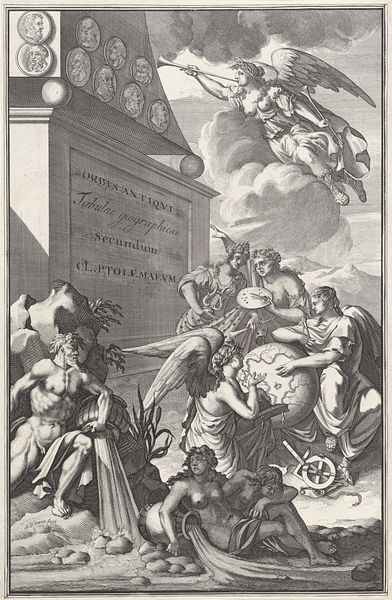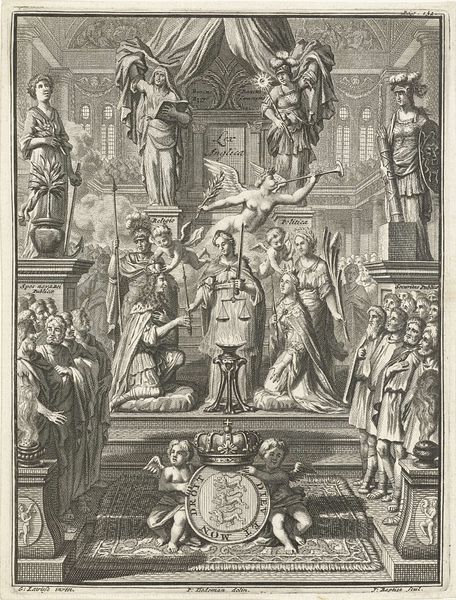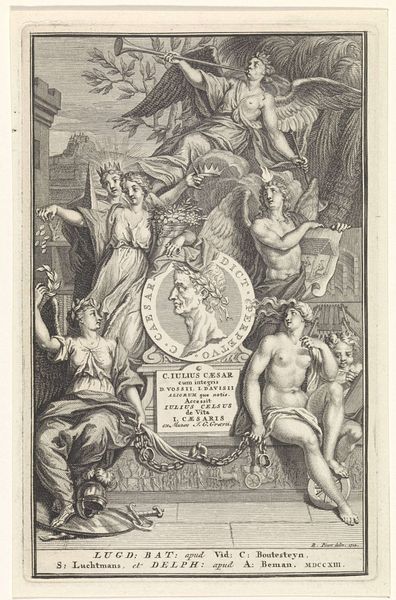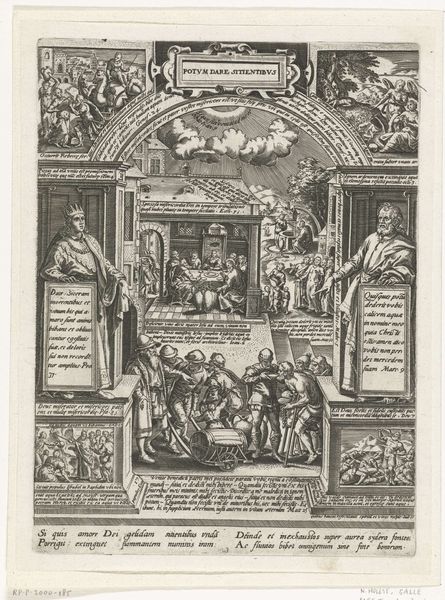
Dimensions: height 154 mm, width 92 mm
Copyright: Rijks Museum: Open Domain
Curator: This drawing, currently held at the Rijksmuseum, is titled "Minerva wijst putto op portret Karel van Mander." Simon Fokke completed it in 1764 using engraving on paper. Editor: It's quite crowded, isn't it? An allegorical scene in ink, almost dizzying in its detail. My first impression is one of intellectual ambition trying to be captured, made material. Curator: Definitely. Look at the dense layering: you’ve got Minerva, goddess of wisdom and strategic warfare, gesturing towards a putto at the bust of Karel van Mander. There's a very clear hierarchy and a self-conscious presentation of artistic lineage being made here. Fokke's playing with imagery associated with the canon. Editor: And isn't that always the game? Minerva carries a spear, but the cherubs – the putti – draw our eye upward and add to the ethereal quality, playing off of and also grounding the material components in the composition. Consider the labour in rendering all these figures and the detail with ink and paper. Curator: The symbolic density is incredible, beyond the obvious. Those putti represent divine inspiration guiding artists, reinforcing art as elevated labour. Note the books and art supplies scattered on the floor and serving as supports: they signify knowledge, history, and the materials vital to creating. This isn't just skill, it is learned craft. Editor: For sure, these components create more narrative and meaning. And the print medium itself--engraving--is significant, right? Mass-producible. What's compelling to me is not just what's depicted but how that connects to the larger circulation of ideas, class, and cultural values at the time through production itself. Curator: I agree. Plus, seeing it today, knowing the materials, gives the scene an additional layer. Knowing what survives highlights this quest to capture inspiration in the bust form; Fokke himself aimed for that effect. Editor: It becomes another step in this representation, right? The ink on paper transforms over time into its own cultural relic—a study on artistry and the production of an image becomes part of an archive of artistic endeavors in itself. Food for thought, really. Curator: Yes, and looking closely today really clarifies just how that archive, or even legacy, has evolved through our collective memory.
Comments
No comments
Be the first to comment and join the conversation on the ultimate creative platform.
